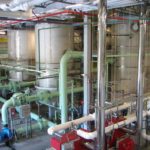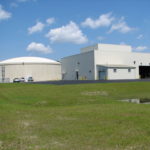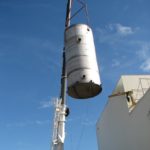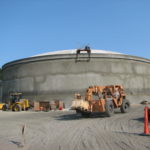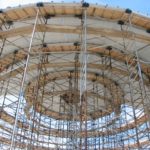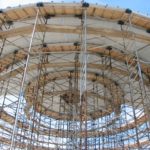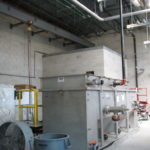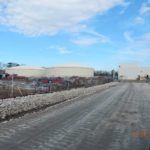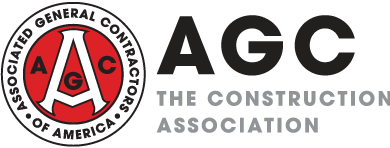- Company: HART Engineering Corporation
- Industry: Water/Wastewater
- Location: Warwick, Rhode Island
- Expected Completion Date: March 31, 2016
- Project Website
Construction of a 6 million gallon storage and treatment facility for TF Green Airport’s deicer collection system. Included the construction of (2) 3 MGD storage tanks and 10,000 sf treatment facility to pretreat glycol contaminated stormwater runoff generated during airport deicer operations.
What impact does this project have on America?
Clean water. Prior to construction of this storage/treatment system all airport deicer stormwater runoff was collected into the stormwater system that discharged into an adjacent stream, which in turn affected aquatic life and vegetation downstream of the airport.
What interesting obstacles or unusual circumstances did you overcome to complete the project?
The overall construction project schedule was condensed due to the delayed bidding and subsequent Notice to Proceed. This presented the challenge of attempting to close in the building prior to the winter season, while not being able to completely close in the building due to the need to install long lead time equipment prior to the roof installation work. The project site was located on property directly adjacent to the TF Green Airport, requiring all crane work to be coordinated through the FAA permit system to ensure that threats to aircraft launching and landing cycles would not be impacted. Work was planned around these limitations which allowed the project to be completed on schedule and well within budget.
What dangers and risks did you encounter, and describe any extraordinary methods used to keep workers safe?
The construction of the (2) 3 million gallon storage tank and the treatment facility was performed concurrently in a limited work area. There were several critical crane lifts that required that all workers be clear from the fall zone during certain periods of the project. Work shifts were staggered during these time periods which eliminated this potential risk of injury to the project’s team members.
How did you leverage new technologies to work faster and reduce waste?
We were able to utilize 3D modeling CAD software to detect any potential utility conflicts and to afford off-site prefabrication a large portion of the process system piping under controlled conditions. This drastically reduced the need for rework and kept material waste to a minimum, which ultimately accelerated the project schedule.
